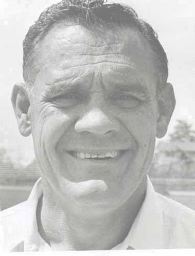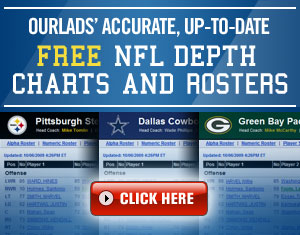 Article written by Barry Wilner, Associated Press, 4/23/88
Article written by Barry Wilner, Associated Press, 4/23/88
Former NFL scout with the NY Giants and National Football Scouting
In 28 darkened rooms, the scouting staffs for each NFL team spent the last week going bleary-eyed observing film of this year’s draft prospects. At the same time, a dozen other scouts were combing the practice fields and spring workouts at colleges throughout the nation, searching for the talent that will entice NFL teams next year.
In the high-tech world of professional football, you never can have enough information. Which is why National Football Scouting Inc., and BLESTO, a pair of scouting combines, are so important to the various clubs. ”The scouts are the backbone of the industry,” says San Francisco 49ers coach Bill Walsh. ”Without a good scouting staff, you can’t possibly find the talent to be competitive.” Walsh’s 49ers employ seven regional scouts, about normal for an NFL team, as well as a director of scouting and a personnel director. These scouts, all former players or coaches, are responsible for all colleges in their area that play football. Despite spending virtually every day on the job during college football season and when spring practices are held, having your own scouting staff usually is not enough. Only the 49ers, Raiders and Broncos do not belong to either combine. National Scouting works for 18 teams, while BLESTO has seven – Chicago, Detroit, Philadelphia, Pittsburgh, Miami, Minnesota and Dallas.
”We have 10 scouts who serve every area of the country,” says Harry Buffington, director of National Scouting. ”They’re fulltime and they work right through, from spring practices to games. They go from the 15th of August until the 15th of December concentrating just on college games. Then they go to the all-star games and to our invitation camp. After that, it’s back on the road, to schools to meet with coaches and players. It’s a continuous process.” Buffington, a former scout, has developed what he terms ”an excellent relationship” with college coaches. Because those coaches are anxious to promote their players and enhance the chances of having them drafted, Buffington says they are anxious to cooperate. ”Even if one or two get mad, it doesn’t last long,” Buffington says. ”They’re not going to hurt their players’ chances.”
Thanks to the combines, the chances of being drafted have increased substantially for players at smaller schools. That’s where talented collegians could fall through the cracks in the system when only team-employed scouts were around. There were just too many schools, games and players. But when the combines came onto the scouting scene – BLESTO began in 1963, National Scouting reached its present enrollment 12 years ago – a Mark Gastineau of East Central Oklahoma or Tom Newberry of Wisconsin-LaCrosse stopped going unnoticed. In fact, they got drafted on the second round, Gastineau by the Jets in 1979, Newberry by the Rams two years ago.
”Our scouts generally have around 50 schools in their areas that they have to report on,” Buffington says. ”If a school plays football, the scouts are responsible for them.” The socialistic approach of a combine might not suit a maverick owner such as Al Davis, but sharing the information doesn’t seem to bother 25 other owners. The combines basically are used to supplement the work of team scouts. ”We deal in general reports,” Buffington says. ”Our scouts send all of the data here and we file the reports into a computer and send them out to our members. They seldom ask us to do anything specific – that’s why they have their own scouts. We guide them and they take it from there.”
National Scouting also runs an invitation camp in Indianapolis right after the Super Bowl. More than 300 players are invited and NFL teams send contingents that often include general managers, coaches, scouts, team doctors and, now and then, owners. ”We invited 320 last year,” Buffington says. ”All got drafted.”
National Scouting has its main office in Tulsa, Okla., where it moved in 1976 ”because it’s centrally located and because it’s my home,” Buffington says. BLESTO, which stands for Bears, Liones, Eagles and Steelers Talent Organization – those four teams originated the combine – is located in Pittsburgh. Most of the combine scouts are former players and coaches. A few leave the combines to work for specific teams – BLESTO kept only two full-time scouts this year while seven area scouts were employed directly by the member teams. Similar operations exist in baseball and hockey, but both are run by the sports themselves. Neither of those drafts get the attention the NFL grab bag draws, however. ”The scouts know how accurate they have to be,” Buffington says. ”Our scouts might be the only ones to see a certain player. A lot of teams are relying on them. I don’t think we’d still have so many teams with us if we didn’t get out good information.”
The following information was taken from Buffington’s obituary www.lubbockonline.com – he passed away November 19, 2003.
After graduating from Pryor (Okla.) High School in 1937, he attended Oklahoma A&M (now Oklahoma State) and graduated in 1949 with a masters degree in education. During World War II he served in the Special Services as a Flying Cadet. He played professional football with the Brooklyn Dodgers and the New York Giants. He later was a scout for the New York Giants. His football coaching jobs included Austin College, Oklahoma State, Texas Tech (defensive coordinator under J.T. King) and the Edmonton Eskimos of the Canadian Football League. In 1965 he became director of National Football Scouting, Inc., in Tulsa, Okla., and served in this position until his retirement. In May 1989 he was inducted into the American Indian Athletic Hall of Fame.








 Box 235 Hiawatha, IA 52233
Box 235 Hiawatha, IA 52233